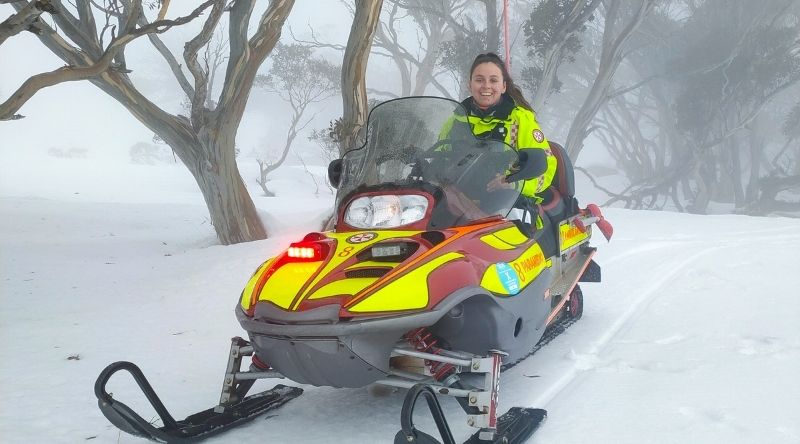
Alpine Operations Team trainee Ashah Browne was just 19-years-old when she witnessed the moment her father suffered a spinal injury while he was skiing in Victoria’s Mt Hotham.
As one would imagine, the accident was both horrifying and confronting for her at the time – but there was also a silver lining to what happened.
Ashah recalls being impressed at the quick and efficient medical response from both the mountain’s volunteer-run ski patrol team and the paramedics who treated her dad.
“That was a pretty challenging time but it was also very satisfying for my family to have access to that kind of medical support,” she said.
“The ski patrol were able to immobilise him, transport him off the side of the hill and transfer into the care of Ambulance Victoria paramedics at the mountain, where he was then flown out.
“He was lucky to have people who were clinically competent in their job and were good at working in such difficult environments.”
Thankfully, Ashah’s father made a full recovery and now, 10 years after the accident, she’s the one getting the opportunity to provide medical care to skiers, snowboarders and other snow visitors who get themselves in strife.
Ashah, 29, is one of just three current NSW Ambulance Alpine Operations Team (AOT) trainees working towards becoming fully-qualified members of the specialist unit, which has just 23 members.
Eighteen of those are trained to operate in the southern alpine regions of NSW during winter, while an additional five work full-time at Jindabyne Station.
AOT Team Leader Paul Taylor is one of the selectors and trainers of the many paramedics who apply to become a part of the team.
Paul, 58, has recognised the need to bring new, younger paramedics onboard as part of a succession plan for when older members retire in the coming years.
He’s also keen to promote more female paramedics putting their hand up to join the AOT.
Since the AOT began more than two decades ago, only five women have been part of the team which includes trainee, Ashah. And of those who applied for an AOT traineeship this year, male applicants outnumbered females by about six-to-one.
“There is no reason we can’t have more women on the job here,” he said.
“We use brains rather than brawn to do our job.”
Ashah echoed this sentiment, urging fellow female paramedics to considering following in her footsteps. “It’s probably one of the best jobs in ambulance,” she said.
“I would love to see more women applying and I think we could offer a different perspective (in the role).”
But despite encouraging paramedics to put their hands up for one of the positions, Paul warned that it’s a steep mountain to climb for those hoping to get on the traineeship.
More than 50 men and women applied earlier this year, before it was whittled down to just three. Paul said there were many key indicators of success he and his fellow selectors looked for.
“We are looking for people to work up here who are team players, firstly – but they can also peel off and work independently,” he said.
“They are people who can pivot on a problem and are happy to communicate their solutions to the problem. “We want people who can work well together, because not only do we work together, we live together here as well.”
A willingness to work with a unique and diverse range of stakeholders – which includes Perisher Ski Resort, National Parks & Wildlife, lodge owners and more – is essential.
To be eligible, paramedics must also be based out of one of several pre-determined stations in south-east NSW, and of course, they’re probably not suited to the role if they’re the type of person who thinks twice about getting out of bed on chilly mornings.
“When you get a day with a blue sky it can’t get any sexier, but unfortunately they are not every day and when they aren’t, it’s cold and miserable,” Paul said.
“There are times when you may be going to an injured patient, the winds are 100km/h and visibility is down to about five metres.”
Chris Romotzi, 27, is one of the other paramedics who is currently on the AOT traineeship.
Along with learning how to operate three types of motorised rescue equipment – a snow mobile and two all-terrain vehicles – Chris said he was relishing the prospect of learning new skills. “There is so much to learn,” he said.
“Every job we do, unless it is right in front of us here at the station, involves mission planning.
We have a risk assessment we do, and based on the risk assessment, that will define what we take on the job.”
